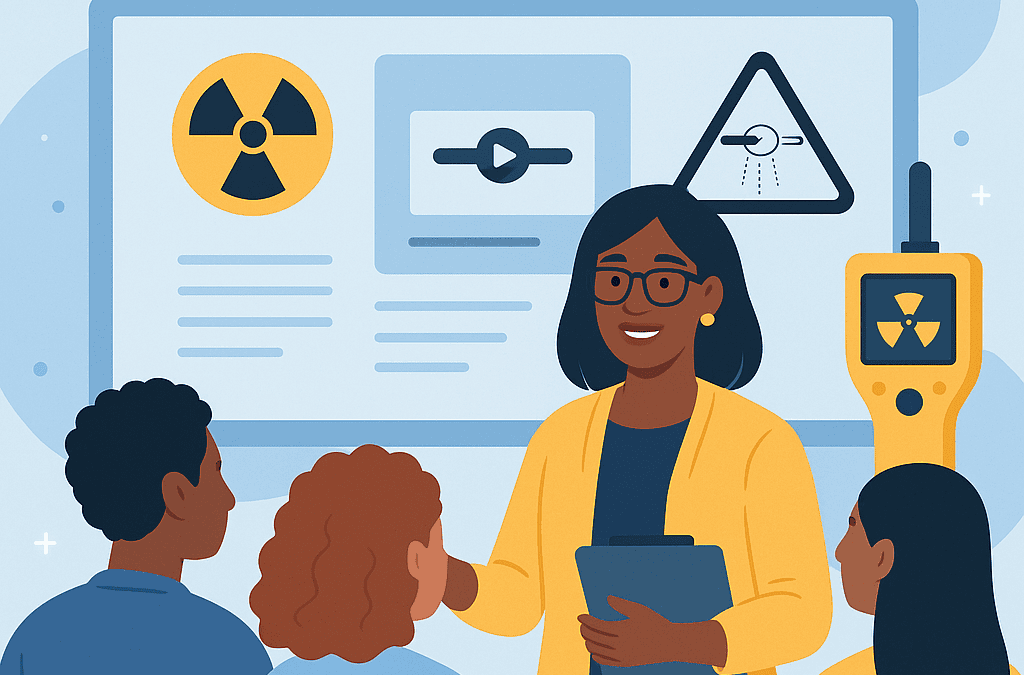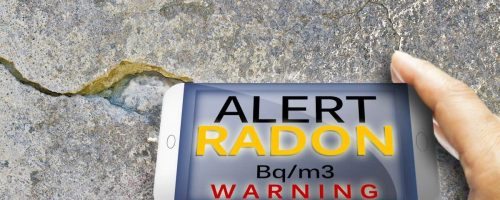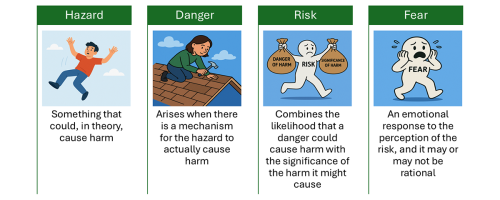The Internet allows anyone with a device and an online connection to access vast amounts of professional and technical information for free. AI can be used to quickly develop many different types of documentation and interactive content. Does this mean Radiation Protection (RP) instruction from professionals can easily be replaced by free tools?
I would argue no, at least not yet.[1]
So, what can professional RP instruction do that tips the cost-benefit analysis in its favour versus doing things alone using all the resources out there? Professional instruction can ensure quality of curriculum and supplementary materials, support learning through appropriate course delivery and assessment, and bring human connection in an increasingly dehumanizing world.
There are two incidents that prompted me to write this blog post. When checking some details about semiconductor radiation detectors, I came across two websites on the topic with very poor content quality. The first, https://www.vedantu.com/physics/solid-state-detector, is on a site that is meant to be instructional. It is unfinished, contains errors, and lacks rigor in statements that are written with confidence. Someone who is trying to teach themselves from it may think the material is difficult and they are not smart enough to learn it, when in reality it is often wrong and overly complicated.
The next, https://physics-network.org/how-does-a-semiconductor-radiation-detector-work/, starts off looking promising (assuming you do not notice they spelled network incorrectly in the site title graphic). But as you scroll down, you encounter repetitive yet inconsistent material. For example, there are two questions basically asking how detectors work, one beneath another. One answer describes gas chamber operation while the other appears to generally describe how detectors in experimental particle accelerators are used to determine properties about the particles. These are on a page about how semiconductor detectors work. For brevity, I should stop criticizing; but, I have to mention that the answer to, “What are three devices used to detect radiation?” lists five devices. Also, the questions on the page are not listed in an order or grouped together in topics in a way that makes learning easier. I will stop.
The second incident that prompted me to write this post happened at a recent RSO course. Part of our safety officer courses are nightly assignments to help participants prepare for their exam. We go through the answers together as a class the next morning. One person, after we had gone through a question that asks participants to convert an exposure reading in roentgen to dose units in rem stated that he was surprized that he had his answer correct, because the calculator he had found online to check his answer had given quite a different answer. When I went to look, the top search for a calculator was https://www.unitsconverters.com/en/Roentgen-To-Rem/Unittounit-6309-6308. It gives 1 R = 11402.5 rem which is definitely not correct. So, I looked further. Another calculator on the top of the search page, https://www.convert-me.com/en/convert/radiation/rrroentgen/rrroentgen-to-rrrem.html?u=rrroentgen&v=1, gives 1 R = 0.877 rem, which is correct for air, but not for tissue. But it doesn’t give any explanation of that. So even with one that gives a correct answer in one situation, if you do not have the knowledge to recognize that it is for a specific application, i.e. what the units really mean, it is very easy to get wrong answers that could have detrimental real-world impact.
Ensuring Quality of Curriculum & Supplementary Materials
These two incidents support my first reason to hire professionals, ensuring quality: professional instruction can ensure that the people who have designed the curriculum and are instructing it are knowledgeable in all the concepts they are teaching. Certified Health or Medical Physicists, CRPA(R), NRCan certified NDT training facilitators, etc. have had to pass examinations demonstrating they are knowledgeable in the fundamentals of radiation protection. People making websites do not. Sites created by AI that are not vetted by people who have a strong background are not guaranteed to be correct either.
The internet is vast and not necessarily high quality. It can be difficult to determine what sources are reputable. Some scientifically solid sites are not as polished as some sites that are not as solid. Professional training will provide you with resources to refer to after your course ends. For example, people who attend our courses are not only given course materials, but five years of access to an online library curated for their course subject and level.
Supporting Learning through Appropriate Course Delivery & Assessment
Pedagogy is the theory and practice of teaching and learning. Good pedagogy leads to appropriate course delivery for the people enrolled in that offering of a course. Good pedagogy along with solid assessment practices make learning easier. Effective teachers make it look effortless, but when it comes time to do it yourself, it can be more difficult than expected to design a RP curriculum, create instructional and supportive assessment strategies for your different learner audiences, deliver the training, and track the results. Especially if you are relying on materials found online to support your course creation, as explained earlier. As far as delivering the curriculum, I have found that many people find teaching similar to public speaking: they would rather do just about anything else. Hiring professional instructors relieves that pressure.
Bringing Human Connection in an Increasingly Dehumanizing World
My last point I hear often: people feel more and more disconnected from each other. I often hear from people that they know they learn better in person. The pandemic lead to increased amounts of online learning, and now some proponents of AI hope to replace all human contact during education.
The benefits of in person training include non-verbal cues of student reaction to the material for the instructor, fewer steps to start a channel of communication, and opportunities to build professional networks. But real-time online instruction, in the hands of professional educators, can still be engaging and successful. It takes knowledge, ability, and effort to craft the experiences necessary to have that happen whether in person or online. Most people who are not professional RP trainers are not allocated the time to take this on.
Bonus Reason
Before wrapping this up, there is a fourth reason to hire professional trainers I did not mention in the introduction, because it just is what it is: you hire professionals for compliance purposes. In some case the regulator or certifying body requires it.
There may come a day that you can consistently obtain high-quality free RP training online that meets regulatory requirements, but it is not here yet. Most anyone with a physics background will never say never, as we learn things like statistical thermodynamics and quantum. But it is improbable in the near future.
All this is not to say that an RSO or XSO cannot create and deliver solid RP education. They can and I have seen it done many, many times. But for those tasked with being the RP trainer who have little experience in RP and little experience creating and delivering a course, I advise taking a safety officer course from a professional RP instructor, becoming very familiar with all aspects of the sources being used, and knowing all aspects of your regulatory conditions before turning to online resources. With a solid foundation of RP knowledge and personal experience being through a course, you will be better equipped to meet the challenge of training your staff yourself.
[1]Lynn MacDonald is the Manager of Training and Liaison Scientist at the Radiation Safety Institute of Canada. She instructs hundreds of people on ionizing radiation protection each year, runs and develops content for our eLearning site, and provides free information on both ionizing and non-ionizing radiation protection via webinars, our enquiry service, and conference and workshop presentations. She has formal learning or work experience in secondary and adult education including administrative roles, computer programming, computer networking, website design, and graduate-level physics, biophysics, and statistics. She is very familiar with education and learning, the internet, and radiation protection, and has more than a cursory understanding of the underpinnings of AI.







